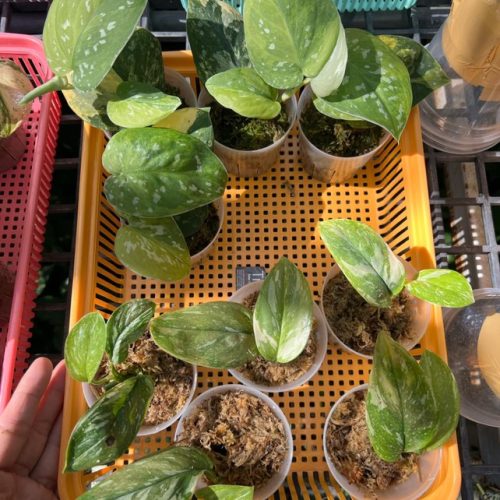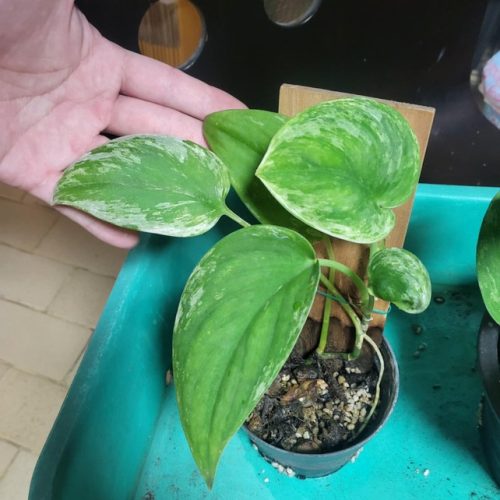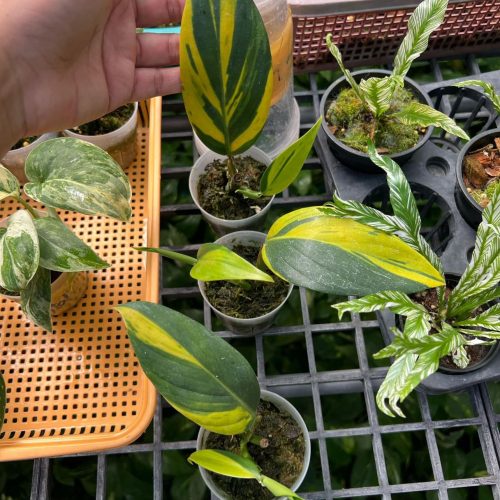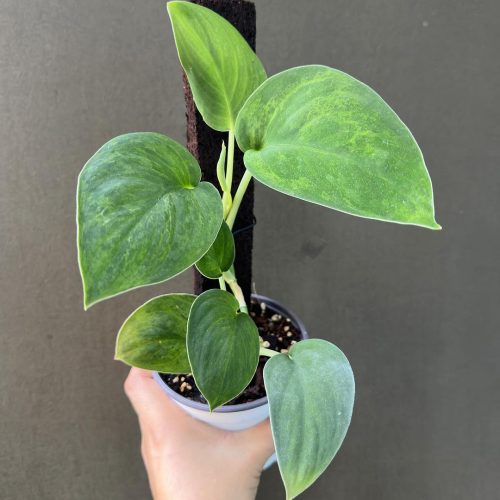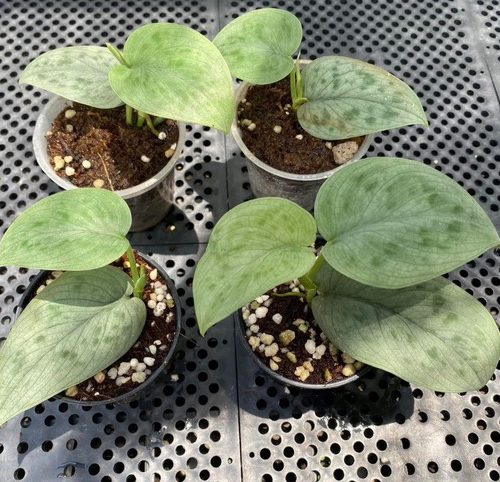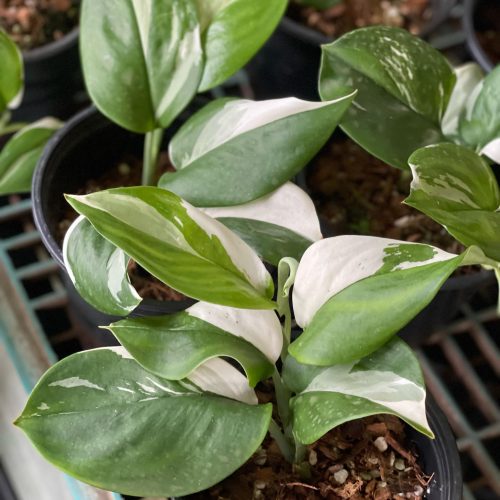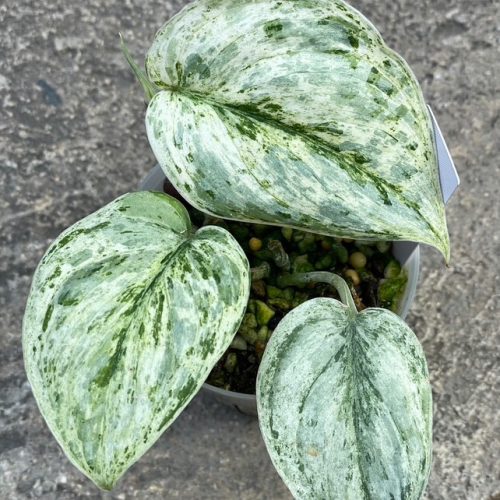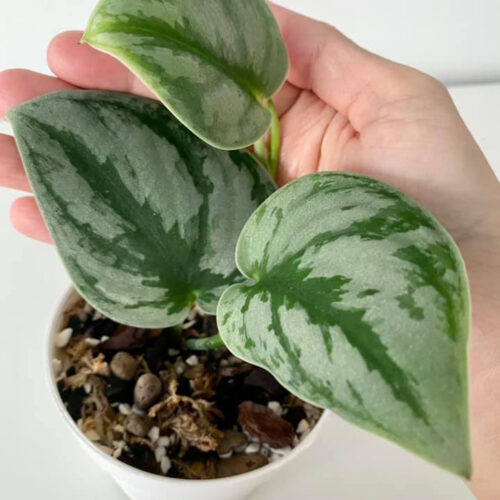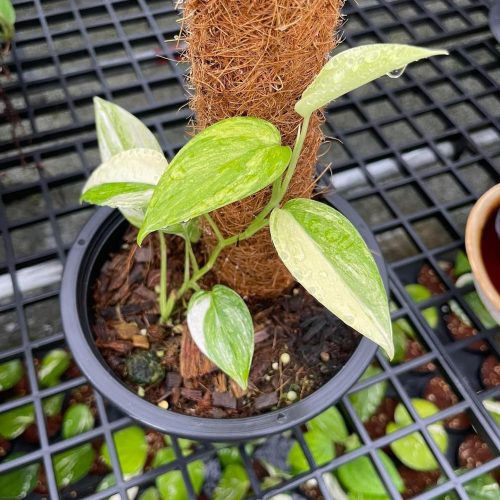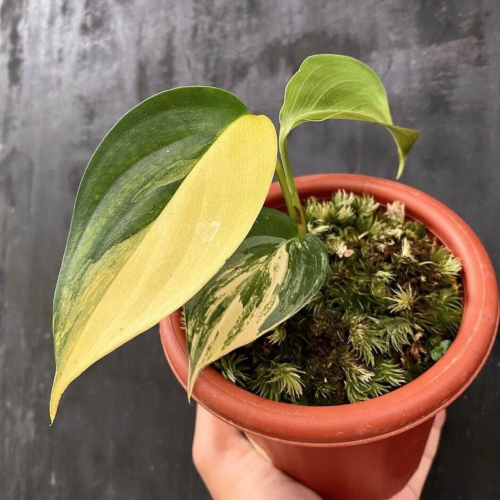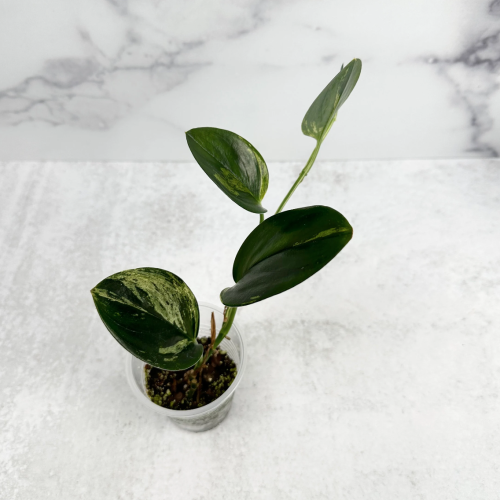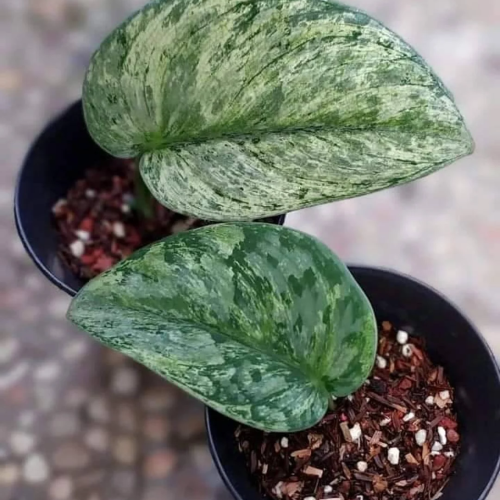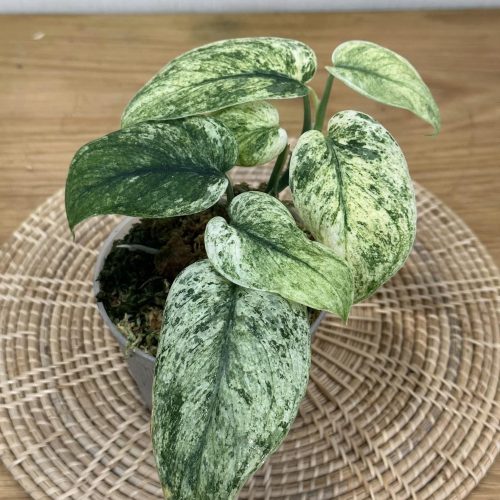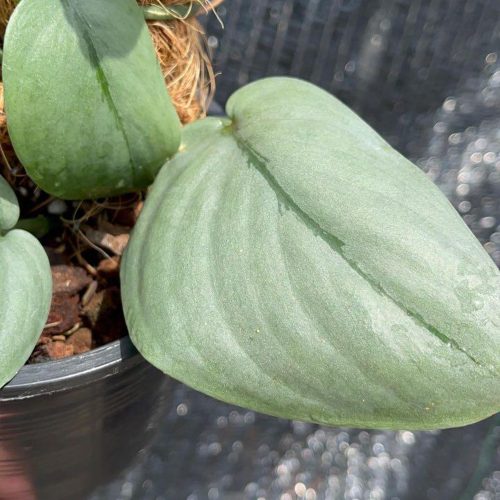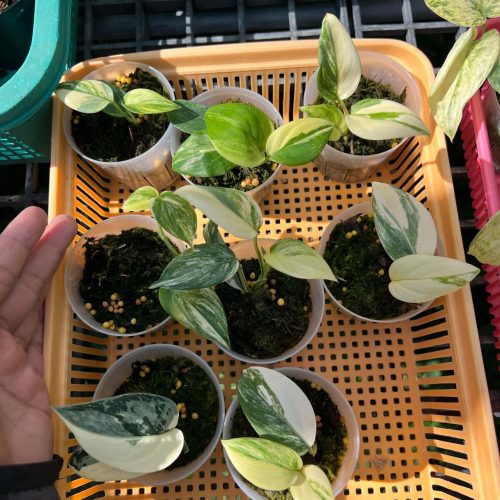Scindapsus is a genus of flowering plants in the family Araceae. It contains around 50 species that are native to tropical Asia. These plants are known for their attractive, lush foliage and ease of care, making them popular houseplants.
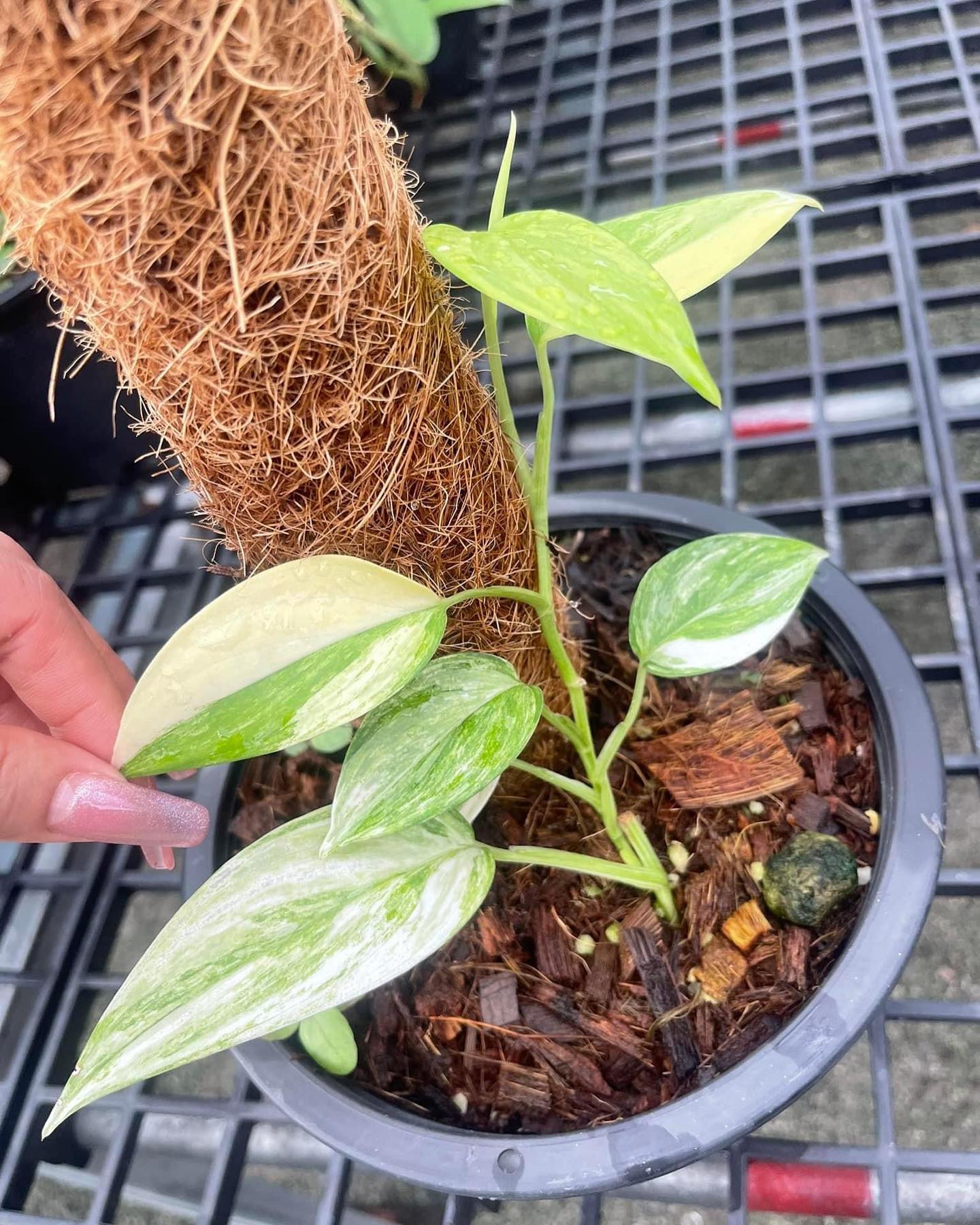
Taxonomy and Physical Characteristics
Scindapsus plants are vines or herbaceous climbers with aerial roots that allow them to cling to trees and rocks. Their leaves are alternate or clustered, entire, and have a heart-shaped or hastate base.
The inflorescence is a spadix with small flowers surrounded by a spathe. The spadix can be longer than the spathe or included within it. The male and female flowers are separated.
There is considerable diversity among Scindapsus species in terms of leaf shape and color. Leaves may be solid green or variegated with white, yellow, or silver markings. Some species have leaves that start out one color when young and change as they mature.
Native Habitat and Growth Conditions
Scindapsus are native to tropical forests and jungle areas in southern Asia. Countries of origin include India, Thailand, Indonesia, Malaysia, Philippines, and Papua New Guinea.
These plants thrive in warm, humid environments with filtered light, such as the understory layer of rainforests. They grow terrestrially and as epiphytes on the trunks and branches of trees. Outside of forests, Scindapsus can be found growing on limestone cliffs and rocks.
Ideally, they require daytime temperatures of 65-85°F (18-29°C) and 60-70% humidity. They can tolerate lower light than many houseplants but grow faster and produce more lush foliage with moderate to bright, indirect light.
Soil Needs
In their native habitat, Scindapsus grow in loose, well-draining soil that is rich in organic matter from decomposing plant debris on the jungle floor.
As houseplants, they should be potted in a loose, porous potting mix amended with materials like peat moss or compost to retain some moisture. Soil should drain freely to prevent rotten roots due to excess moisture.
Watering and Fertilizer
Scindapsus prefer consistently moist but not wet soil. Water thoroughly whenever the top few inches become dry, allowing excess water to drain away after watering. Reduce watering frequency in winter when growth slows.
These plants are light feeders that require little fertilizer to maintain health. Use a balanced houseplant fertilizer at half strength a few times during the active growing period from spring through summer.
Common Houseplant Species
Here are five of the most popular Scindapsus houseplant species:
Scindapsus pictus ‘Argyraeus’
This versatile vine has heart-shaped, silver-variegated leaves with gray-green centers that follow the silver veins. It tolerates lower light than other Scindapsus.
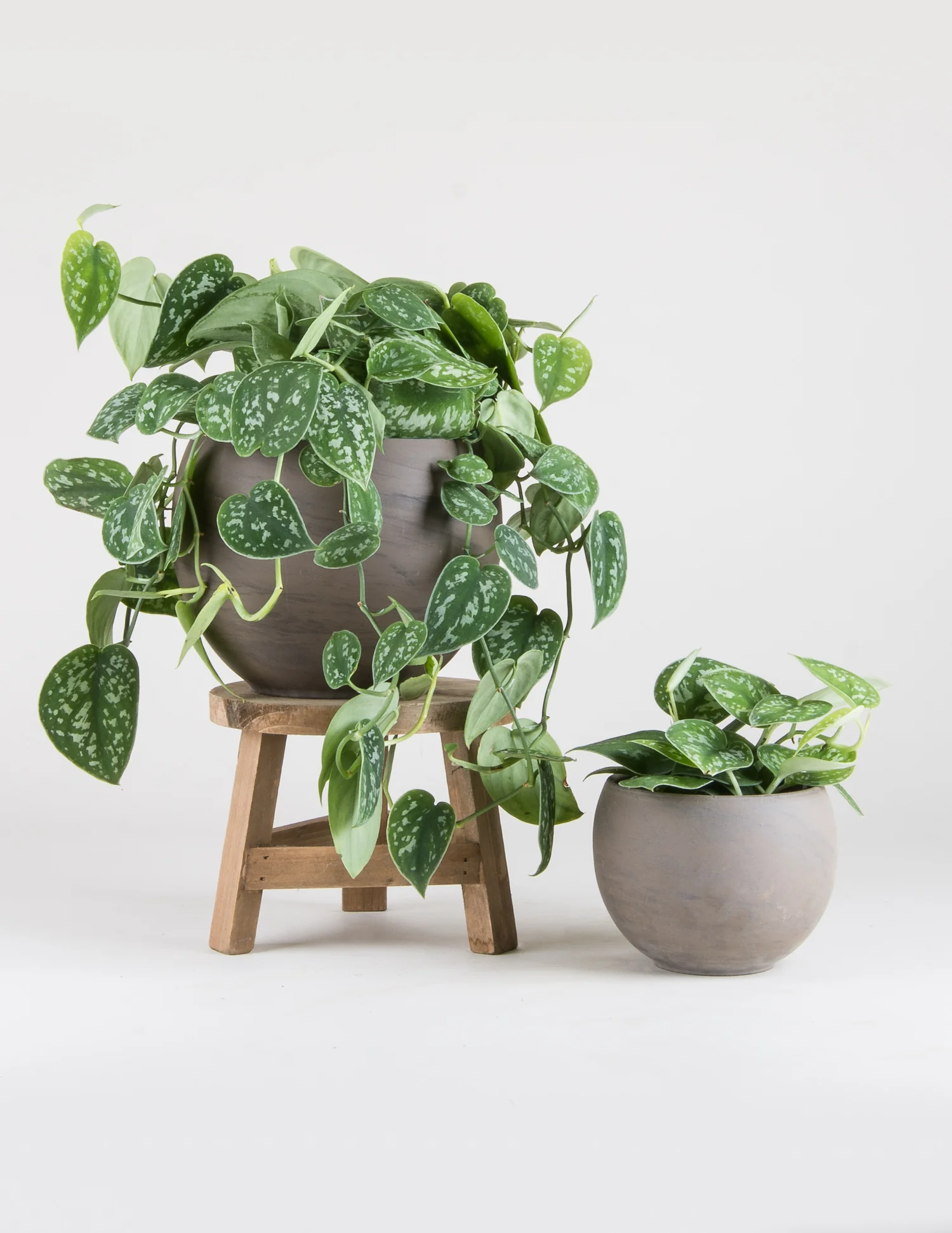
Scindapsus pictus ‘Exotica’
Sometimes called silver satin pothos, this Scindapsus has olive green leaves covered in silver splashes and dots that provide unique texture and visual interest.
Discover the most sought-after Scindapsus varieties of 2023
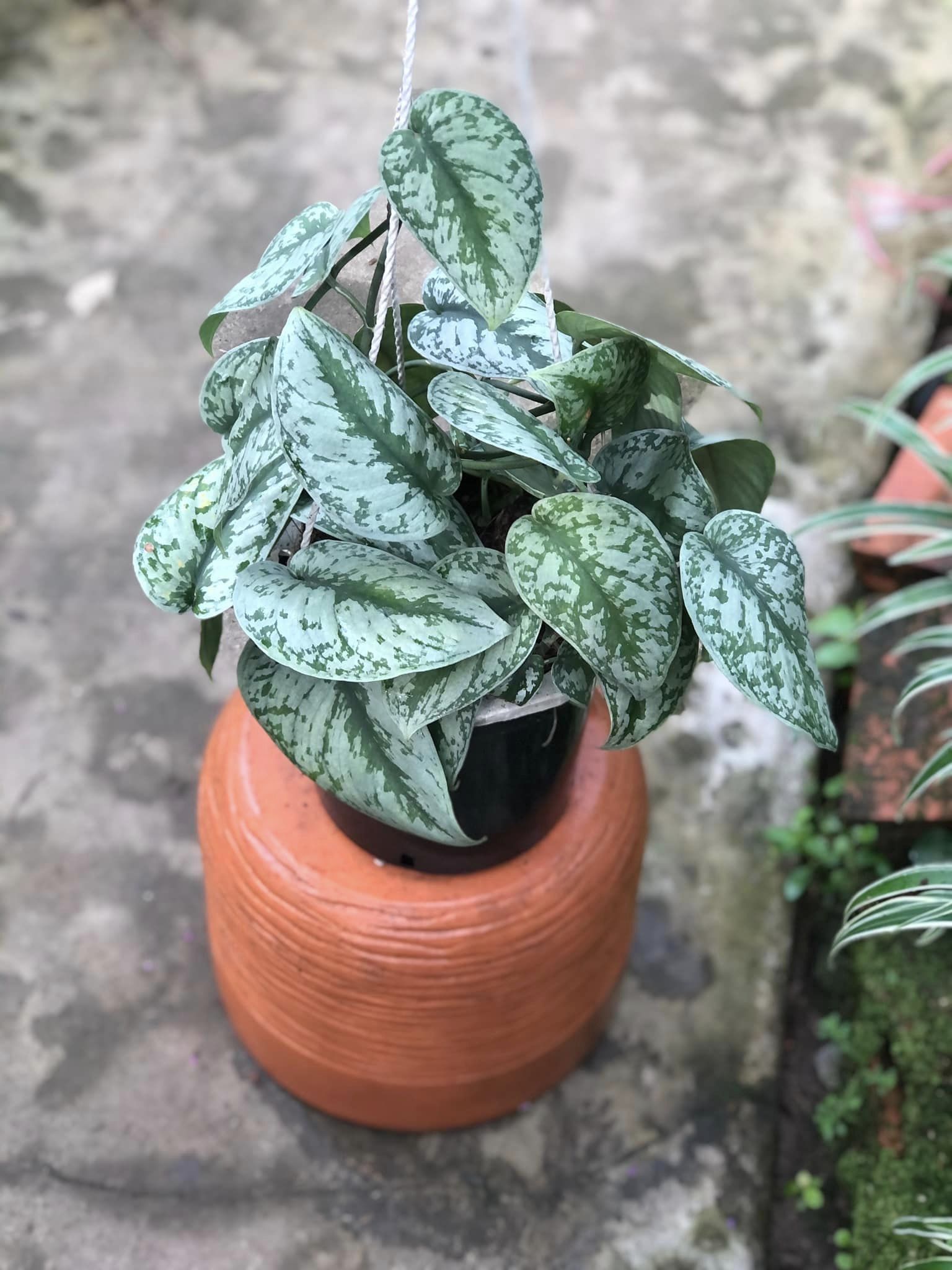
Scindapsus pictus ‘Silvery Ann’
Silvery Ann has rounded, matte silver leaves with irregular green blotches. It is smaller and more compact than other Scindapsus pictus varieties.
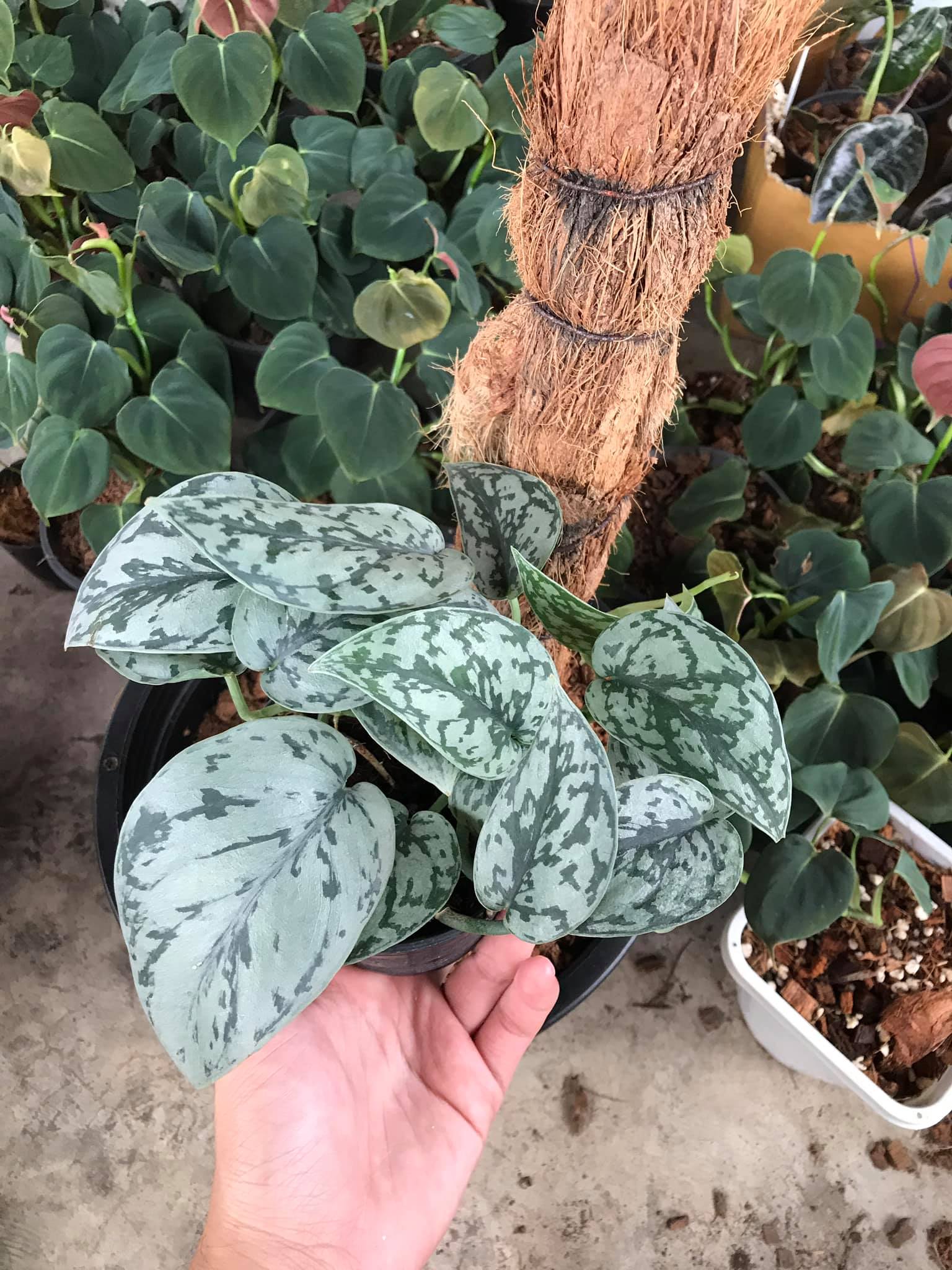
Scindapsus aureus
Also called pothos or devil’s ivy, S. aureus has bushy growth with waxy green heart-shaped leaves. It is very low maintenance and great for beginners.
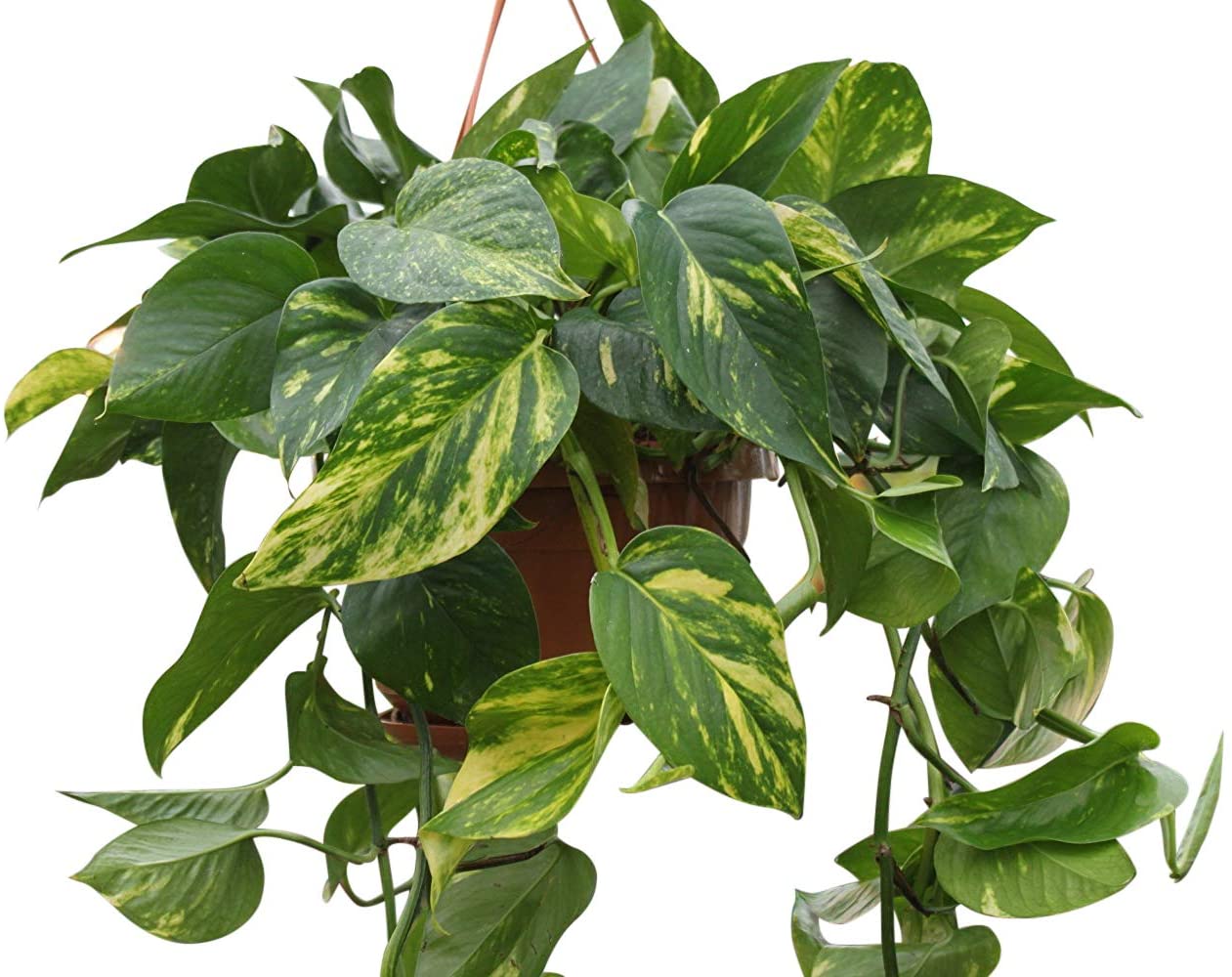
Scindapsus treubii ‘Moonlight’
This variety has luminous chartreuse colored leaves that brighten shady spots. The leaves are rounder than other Scindapsus. It spreads vigorously as a vine.
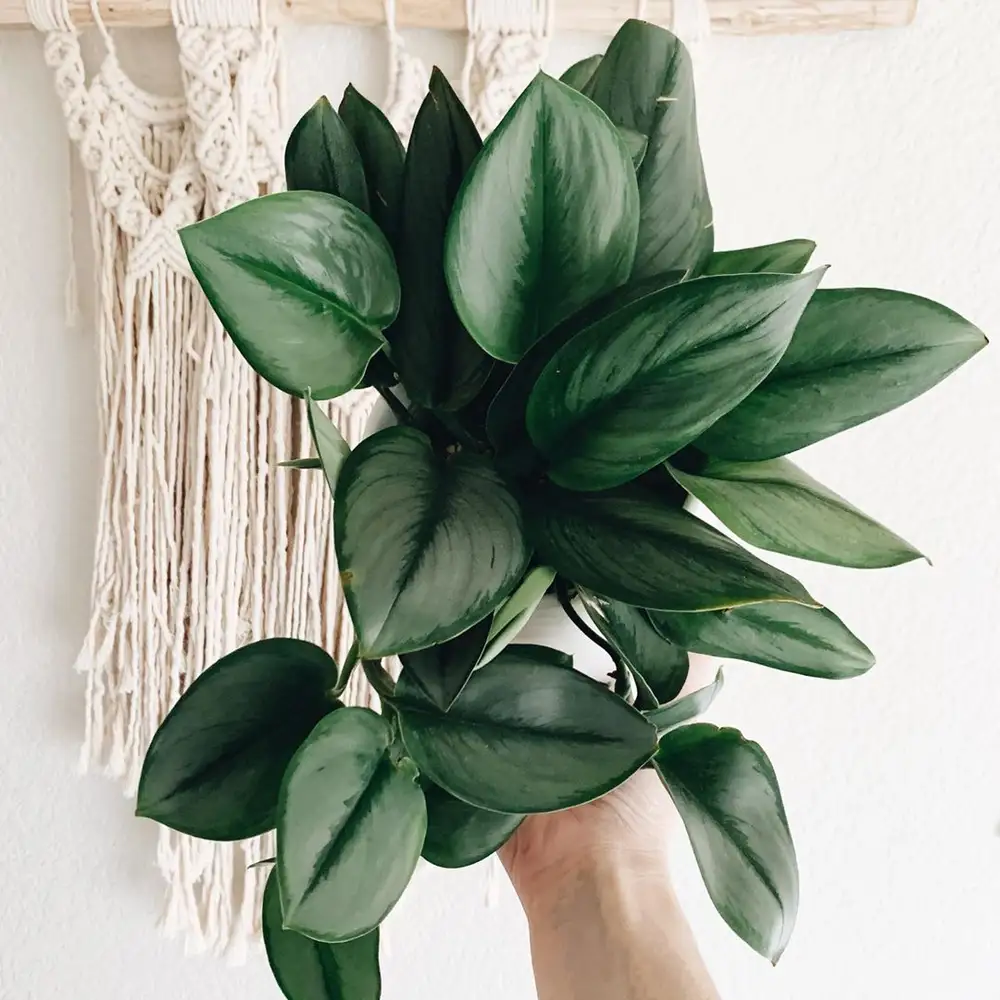
Care and Cultivation
Caring for Scindapsus as houseplants is relatively easy. They adapt well to growing indoors and have minimal care requirements once their preferences are met. Here are some tips:
Light
Most Scindapsus varieties do best in bright, indirect light. Some direct sun is acceptable but more than a few hours causes scorched leaves. Low light causes sparse, leggy growth.
Watering
Water whenever the top inch or two of soil is dry. Drooping leaves often indicate under watering. Allow soil to fully dry between waterings in winter.
Humidity
Mist leaves regularly or use a pebble tray to provide 40-50% humidity similar to their native jungle habitat. Higher humidity encourages lush growth.
Temperature
Scindapsus prefer daytime temperatures around 70-80°F (21-27°C) and above 60°F (15°C) at night. Keep away from cold drafts in winter.
Fertilizer
Fertilize monthly in spring and summer with a balanced houseplant fertilizer diluted by half. Fertilize sparingly or not at all in fall and winter.
Support
Add moss poles, coils, or other plant supports to encourage climbing growth rather than letting stems trail onto the floor.
Pruning
Prune to control size and trailing vines or to remove damaged leaves and stems. Scindapsus readily regenerate after pruning.
Potting
Repot every two years in spring as needed to provide room for root growth. Scindapsus prefer snug pots and grow best when slightly root bound.
Propagation
Take four to six inch tip cuttings in spring or summer, allow to callous, and root in water or moist potting mix to easily propagate Scindapsus.
Where to buy Scindapsus? Benefits from importing plants from Thailand
- Shipping: Door to door shipping, fast and safe with Dragon Courier
- Biodiversity: Thailand is known for its rich biodiversity, including a wide variety of aroid species. This diversity allows importers to access a broad range of unique and exotic aroid plants.
- Quality and Health of Plants: The suitable climate helps the plants grown here stay healthy and of high quality.
- Cost-Effectiveness: Due to favorable growing conditions and efficient production methods, Thai aroid plants can often be more cost-effective compared to those from other countries.
- Access to Hybrid Varieties: Thai growers are often involved in the development of new hybrid aroid varieties, offering unique plants that may not be available from other sources.
Scindapsus species are the most sought after by aroid plant lovers
Pests, Diseases, and Problems
Overall, Scindapsus are remarkably resilient plants when provided with suitable growing conditions. They suffer few serious pest or disease problems indoors. Potential issues to watch for include:
Pests
Mealybugs, spider mites, thrips, and scale insects may sometimes infest leaves and stems. Isolate and treat affected plants to control household infestations.
Diseases
Bacterial or fungal leaf spot diseases occasionally occur. Prune and discard affected foliage and adjust watering practices to allow leaves to dry out between waterings.
Leaf Yellowing
Leaves turning yellow is typically a sign of over watering root rot but can also indicate insufficient fertilizer. Allow soil to dry between waterings and apply fertilizer to green up foliage.
Leggy Growth
If stems become long and spindly with sparse leaves, it indicats insufficient light. Move plant to a brighter location or prune back and propagate leggy stems.
Brown Leaf Tips
Dry air or irregular watering causes brown crispy leaf tips. Increase humidity, ensure even soil moisture, and remove damaged leaves to resolve the issue.
Conclusion
With their graceful vining growth and attractive foliage, Scindapsus make excellent easy care houseplants that can enhance indoor spaces in homes and offices. They are unfussy plants that add a lush, tropical look. Their versatility and hardiness as indoor plants ensure Scindapsus will continue to be popular. Care for them properly by providing adequate warm temperatures, humidity, bright indirect light, moisture retentive well-draining soil, and occasional fertilization for healthy growth.
See more: Are you growing scindapsus at home? Find out its 5 secret advantages!

